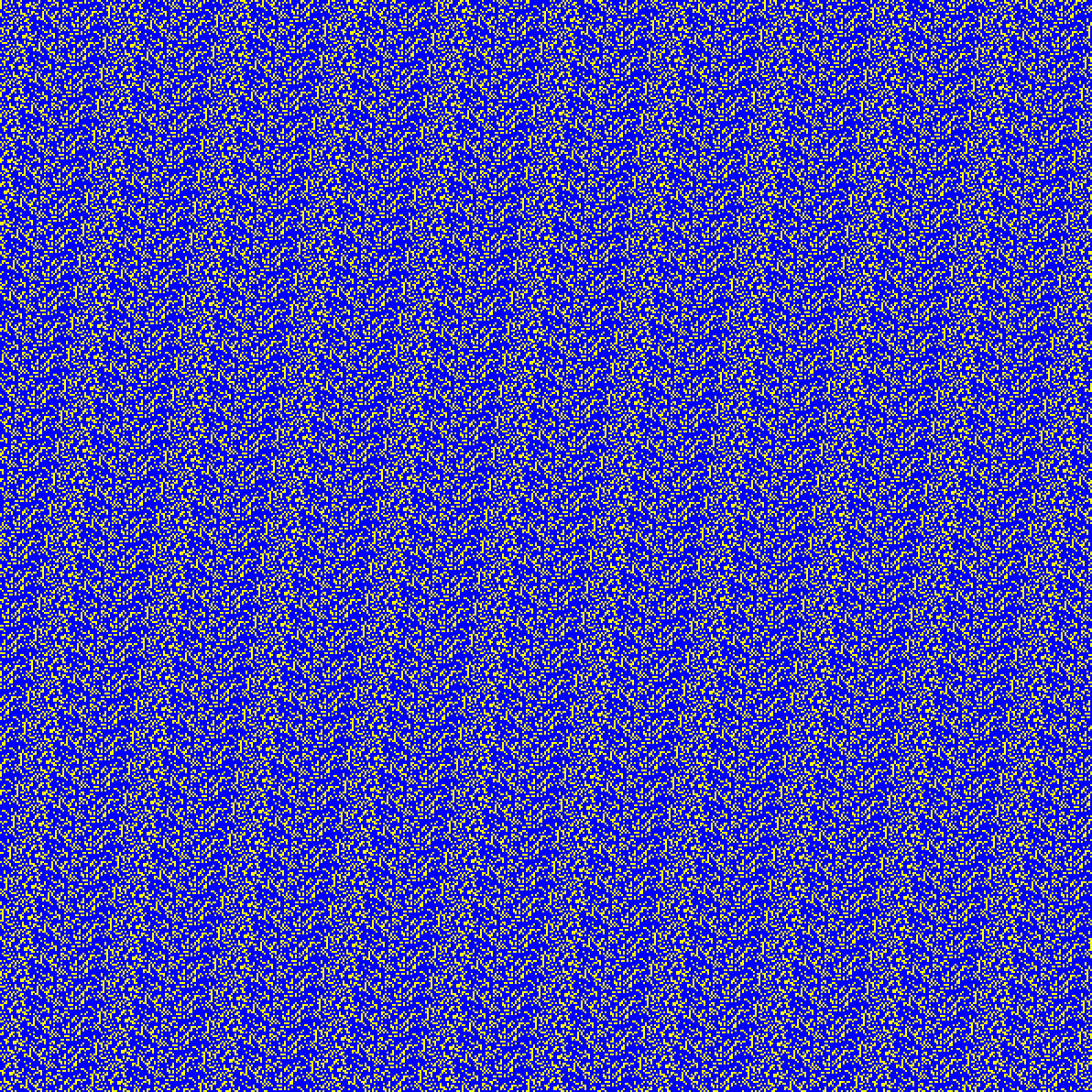Behind the Cyclartcy scenes …
All images © 2020 Chris Culy
Previously I introduced Cyclartcy, a way to create art using arbitrary numbers generated from a photograph. In this post I’ll go into more detail about the process and some of its visual properties. (Another post talks about its mathematical properties.)
As before, I have used a larger version of this photograph to create all the images here. As a reminder, the results with this smaller image would be different from those given here.

Flowers in Vancouver, British Columbia. © 2007 Chris Culy
Here’s the very first Cyclartcy that I showed:

(1) Cyclartcy: Arbitrary From Flowers LUM-BY
Let’s look at it in a little more detail. First, it uses the luminance property of the pixels. In the mathematical post, we see that there are 6 cycles for luminance, and the second longest is length 1,013, which is what the above image is using. Specifically, it uses this blue and yellow signature of the cycle:

Arbitrary From Flowers: LUM signature 1,013
You might recall that Cyclartcy images are constructed by taking a signature (but just 1 pixel high) and wrapping it to a given length, with the remainder continuing on the next row, and the row after that, etc. until we’ve used the entire signature. A second copy of the signature is laid out where the first one ended, in the same fashion. We continue as many times as we want, “trimming” any excess when we have reached the desired height for the image.
In (1), the width and height are both 597, though the version above has been magnified 2x. We can magnify the first two rows of even further to show the beginning of the first copy of the signature, and then where the second cop of signature starts (at position position 496 = 1013-597). I’ve put a black line next to the beginnings of each copy of the signature.

Cyclartcy: Arbitrary From Flowers LUM-BY, beginning of first 2 rows

Cyclartcy: Arbitrary From Flowers LUM-BY, middle of first 2 rows, with start of second signature
The consequence is that each copy of the signature is shifted with respect to the previous copy, somewhat like a twill works in weaving. It is also this shifting and repeating of the irregular signature that leads to the regular intricate patterns and textures in Cyclartyc images.
The amount of shifting of the signature is determined by the width of the Cyclartcy image. One thing that is very striking is that a small change in width, even just by 1 pixel, can make a big difference in the patterns we see in the output. Here are 3 examples. The first example is the image we have been working with, which has a width of 597. Below it are two more images, using the same signature, but one image has a width of 596 and the other image has a width of 598. You can see how different they are from the original and from each other.

(1) Cyclartcy: Arbitrary From Flowers LUM-BY (width 597)

(2) Cyclartcy: Arbitrary From Flowers LUM-BY (width 597)

(3) Cyclartcy: Arbitrary From Flowers LUM-BY (width 598)
We saw in the original post that some Cyclartcy images have the flavor of Op Art, where our visual system is tricked in one way or another. As a final example of the visual properties of Cyclartcy images, I want to show a different aspect of them which poses an issue for our visual system (at least for mine!).
Below is a movie of the original image scrolling left to right (click one of the triangles to start it playing). For me, if I look at the left edge, it takes a a second or two for the “incoming” columns to be recognized as part of the pattern. To a certain extent, the right edge seems to disintegrate a little before the edge (in other words, it’s harder to recognize the pattern). The same kind of thing happens for me if I scroll the image vertically (not shown here).
Cyclartcy: Arbitrary From Flowers LUM-BY (width 597), scrolling
I’m having a lot of fun exploring the range of Cyclartcy images, and I am fascinated by the range of patterns and textures, as well as by the visual effects. Hopefully this glimpse “behind the scenes” gives you an idea of how it all happens.